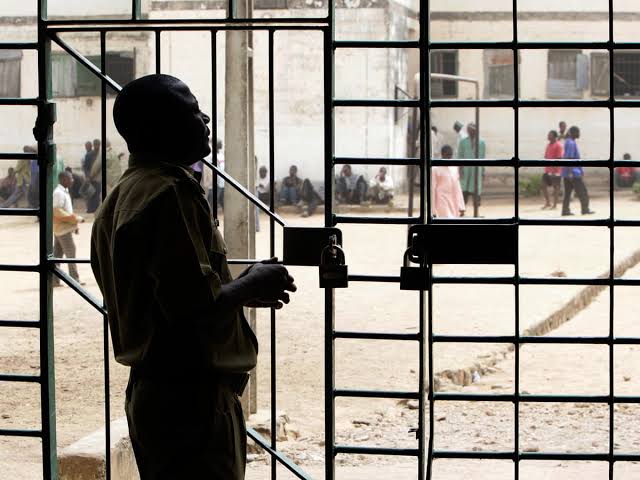
The Federal Government has disclosed that a total of N22.4 billion would be spent on feeding prison inmates across correctional centres in the country.
The proposed expenses are already budgeted for in the 2023 Appropriation Act, OsunDaily News learnt.
Speaking at a two-day High Conference on Decongestion and Corrections Management held in Abuja, the nation’s capital city, the Permanent Secretary, Ministry of Interior, Dr Shuaib Belgore, highlighted that there has been a steady rise in the population of the custodial centres with at least 80% of the inmates awaiting trial.
According to him, there are 244 custodial centres nationwide, with a 75,507-inmate population, thereby leading to 82 of them being overcrowded.
The total number of male inmates is 73,821 and female 1,686 female inmates, he noted.
Out of the 75,507 inmates, 52,436 are awaiting trial while 23,071 are convicted persons, with 3,322 as condemned inmates on death row, the government official disclosed.
Barely a month ago, the Nigerian Correctional Service (NCoS) disclosed that no fewer than 3,298 inmates across the custodial centres in Nigeria are on death row.
OsunDaily News reports that the Public Relations Officer of the Service, Abubakar Umar, disclosed this during an interview with journalists in Abuja.
He, however, said the term ‘condemned criminal’ had been abrogated with the emergence of the NCoS Act 2019 which backs the correctional centres, adding that the term is stigmatizing.
Umar stated that the service preferred to use a more friendly term of ‘Inmates on Death Row (IDR)’, stressing that death sentences were not always carried out immediately after they were imposed.
He said: “There are often long periods of uncertainty for the convicted while their cases are being appealed at higher levels.
“Inmates awaiting execution live on what we call death row; some offenders have been executed more than 15 years after their convictions.
“They were basically awaiting the hangman’s noose in our custodial centres after being found guilty of capital offences.
“We have quite a number of them; as of today, we have a total of 3,298 inmates on death row. They constitute about 4.5 per cent of the total number of inmates in our various custodial centres nationwide.”
Umar said that some IDRs had been in custody for many years, adding that some had been there since they were arrested up to when they were tried and sentenced.
According to him, many of them committed capital offences like culpable homicide, armed robbery, and terrorism, among others.
He said: “The good thing is that we engage all of them in activities that will reform and modify their behaviours.
“The goal is to make them better citizens of the nation.
“We also make them undergo personal development programmes like anger management, civic education, as well as entrepreneurship.
“Some of them, who do well and show some glimpse of hard work, industry, and discipline, are recommended for clemency to the relevant authorities.”


